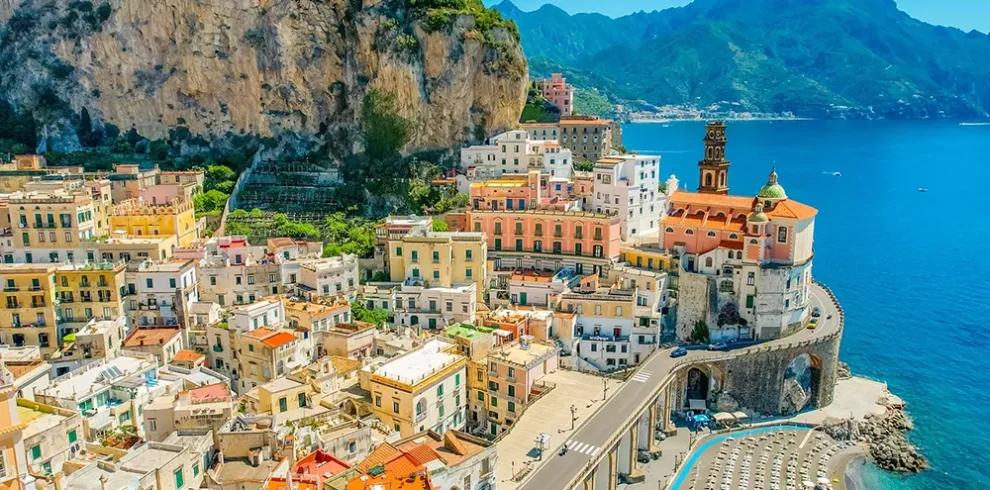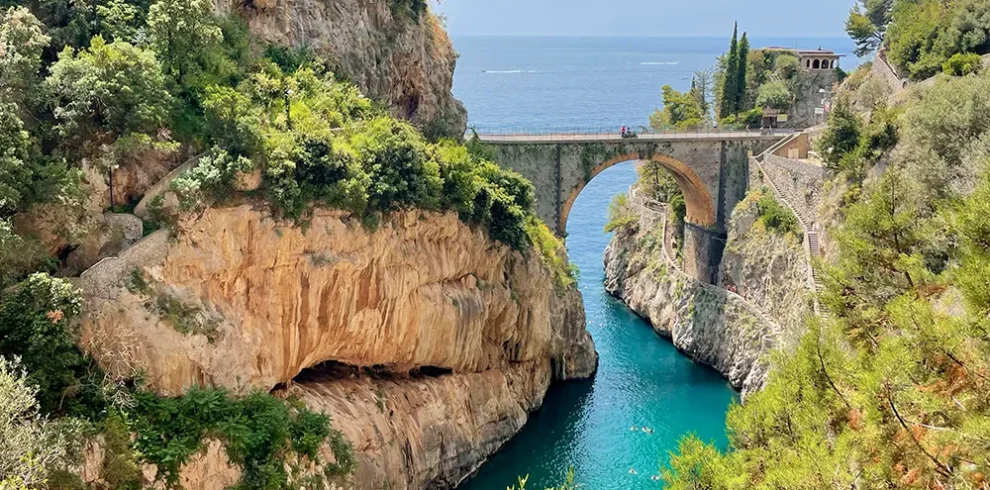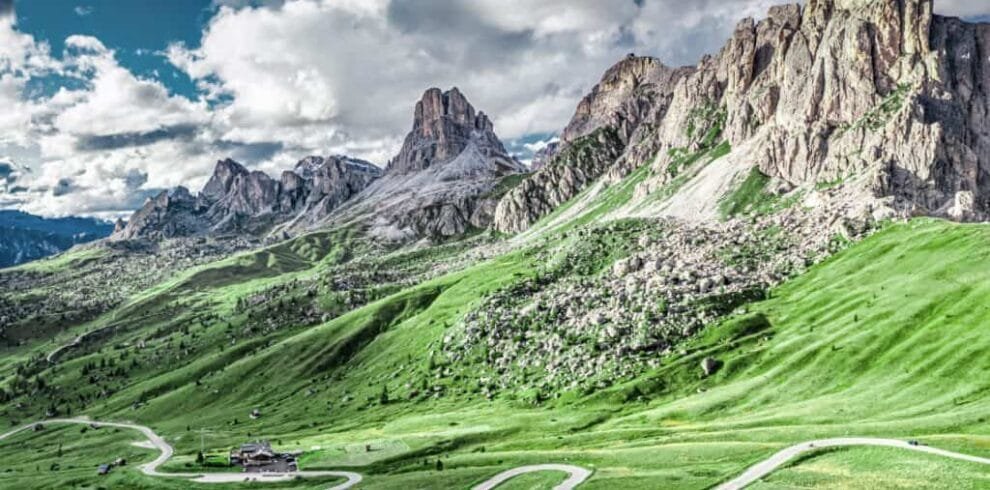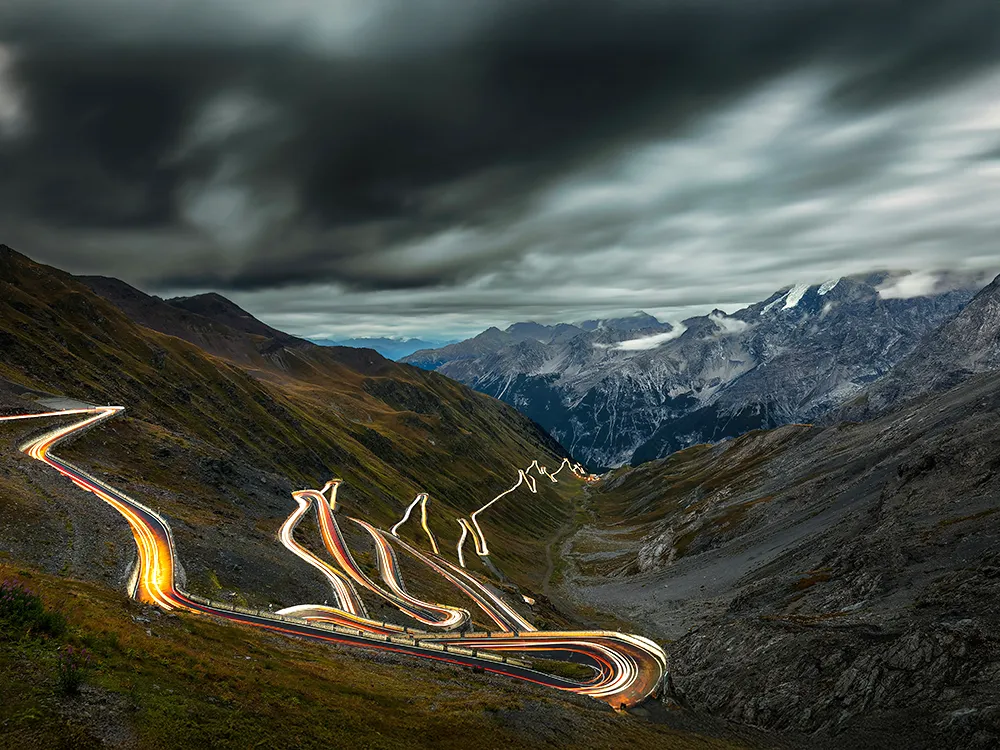
The Stelvio Pass is famous for its 48 hairpins and breathtaking Alpine scenery. But it demands respect: at 2,757 meters altitude (9,045 ft) the weather can change quickly and even strong riders face cold winds, rain or snow on the high summit. For international riders planning the trip of a lifetime, gear preparation is key. A proper Stelvio motorcycle gear checklist will keep you safe, warm and comfortable on the mountain road. In this guide we draw on advice from Italy Moto Tours experts and experienced motorcyclists: we’ll cover everything from protective clothing to bike maintenance, plus bonus tips on the best bikes to ride or rent for Stelvio.
Riding Stelvio Pass – Why Preparation Matters
Riding the Stelvio Pass is a bucket-list experience. Its twisty tarmac snakes through the Italian Alps, rewarding riders with views of peaks, glaciers and valleys. But even on a sunny day at the base, the summit can be near freezing. For example, climate data shows average summer highs around 16°C at Stelvio (July) and winter lows of -7°C. In practice, riders often encounter temperatures that drop quickly as they climb. Wind chill, rain or even a stray flurry of snow are possible at 2,700m – events many lower-altitude tours never see. This is why preparation matters: the right gear keeps you warm and protected, and bike checks prevent mechanical trouble on the winding pass.
International tourists, especially those from warmer regions, must pack smart. Italy Moto Tours riders (from Europe, the US, Australia and beyond) often report that Stelvio required more layers and rain gear than expected. Lower altitudes might feel summer-warm, but the upper hairpins demand warm clothing. A well-packed bag with multiple layers, waterproof gear and the tools below will cover all bases. Before hitting Stelvio, also review local rules (right-side riding in Italy) and consider travel insurance for peace of mind. With the right mindset and equipment, the Stelvio Pass becomes not just challenging, but fun.
Motorcycle Gear Checklist

Motorcycle gear is your first line of defense on Stelvio. Use this checklist to cross-check your packing and pre-ride preparation:
- Full protective gear: A DOT or ECE-rated helmet (full-face is best) and a motorcycle jacket and pants with armor are non-negotiable for safety. Your jacket and pants should have CE-rated padding at shoulders, elbows, knees and back. Strong gloves and sturdy over-the-ankle boots are equally important. These will protect you from road hazards and the cold. As one guide says, “wear protective armor that includes a high-quality helmet, a rugged riding jacket, gloves… and sturdy riding boots”. For Stelvio specifically, consider a jacket with a waterproof liner or carry a separate rain jacket (see below). A multi-purpose adventure jacket with vents is ideal: on warm descents you can vent it, and on chilly ascents you zip up the thermal liner. The bottom line: wear full gear at all times on Stelvio. Even an experienced rider can slip in a turn – fully armored clothing mitigates injury.
- Layered clothing for temperature swings: The weather on Stelvio is all seasons. You may start a ride in short sleeves at Bormio (500m altitude) and end with winter gloves at the pass. To handle this, wear a moisture-wicking base layer (thermal undershirt and leggings) under your armored suit. Add a mid-layer like a fleece or thermal liner for insulation. Carry extra gloves and socks – for example, thermal or wool socks and a spare pair of gloves. Many riders also use a neck gaiter or balaclava to protect against wind. These cover exposed skin and block cold air from entering your jacket or helmet. As one gear guide says, “a neck gaiter can be a lifesaver” on cold rides. In short, be prepared for alpine cold: pack layers you can add or remove. A lightweight down or fleece jacket in your luggage is wise. Hands and feet are most vulnerable, so consider heated grips or gloves if you have them – they make a big difference when descending through freezing fog at 30km/h.
- Rain gear & waterproof outerwear: The Alps are known for sudden showers, even in summer. A waterproof rain suit (jacket and pants) is a must. Pack a compact rain jacket or an over-suit made of breathable, waterproof material. It’s not heavy and can slide over your riding gear. Even if skies look clear at Bormio, a cloudburst on the pass can soak you in minutes. Rain gear also doubles as a windbreaker on cool afternoons. Make sure your outer layers have waterproof seams or use seam sealer tape. Keeping dry is key to retaining warmth. Don’t forget glove covers or waterproof socks – nothing chills you faster than wet hands and feet. Some riders bring a small umbrella or portable seat cover in a saddlebag, but the easiest solution is a proper riding rain suit.
- Bike maintenance & safety checks: Before any Stelvio run, inspect your motorcycle thoroughly. Check tires for sufficient tread and correct pressure; remember, cold tires grip less. Verify that brakes (pads and fluid) are in top shape – having responsive brakes is critical on steep descents. Oil, coolant and brake-fluid levels should all be topped up. Test your lights and signals (fog or darkness can descend unexpectedly). Adjust your suspension if possible for a slightly firmer setup, which can improve handling on tight hairpins. If you have ABS or traction control, keep them on (they’re legal in Italy). At Italy Moto Tours, our mechanics always prep every tour bike for high passes to ensure “proper tread depth” and responsive brakes. Take a short test ride on the nearest empty road to feel everything is working smoothly. A minor mechanical issue on Stelvio could ruin the trip, so check everything twice.
- Tools, spares & emergency kit: Carry basic tools and spares for quick roadside fixes. At minimum, pack a motorcycle tool kit with tire-pressure gauge, multi-tool, screwdrivers, a small adjustable wrench and pliers. Bring a tire repair kit (plug kit or sealant) in case of a puncture on the pass. Include spare fuses, a set of bulbs, duct tape and zip ties. A compact first-aid kit with bandages, wipes and painkillers is also wise. Store a portable phone charger/power bank, because GPS apps and cameras drain battery fast in cold weather. Keep your important documents (ID, insurance, rider’s license) in a waterproof pouch. If riding solo, a satellite messenger or personal locator beacon can be lifesaving; if in a guided group, make sure everyone has a phone number for mountain rescue (112 in the EU). Remember, many faults stem from missing tire pressure or a loose bolt – these small tools can get you back on the road. As one packing guide says, long rides call for a “comprehensive tool set” including spare parts and tire repair supplies.
- Navigation & communication: A GPS device or smartphone with navigation is essential. Preload your route (many riders use dedicated GPS, Google Maps offline, or an app like Detecht) and bring a handlebar mount for it. A charging cable and portable charger ensure your devices stay powered. If you plan to cross into Switzerland via Umbrail Pass, note that mobile coverage can be spotty at altitude. Download offline maps of the Dolomites region just in case. For communication, a Bluetooth helmet headset lets you chat with fellow riders or take calls hands-free. Some riders tape a mirrorless camera or phone mount to their handlebars for the “ride leader” to film scenic stretches. While not strictly gear, do inform someone of your plan: let family or the tour company know when you aim to return.
- Hydration and snacks: Stelvio is a big workout. Bring at least 1–2 liters of water (or a hydration bladder in your backpack) and energy snacks (bars, nuts). Staying hydrated keeps you alert and warm. High-altitude sun can also dehydrate you quicker. Pack sunscreen and lip balm too – sunburn can sneak up from the glare of snow in summer. A small towel or handkerchief helps wipe sweat or rain off your face shield. These items don’t take much space but pay off in comfort.
- Action camera & mount: Mount a GoPro or action camera. Stelvio’s twists and scenery are made for video, but holding a camera is impossible on this road. Secure a handlebar or helmet mount before the ride and test it for stability. A camera will record the descent and climb (proof for your friends), but above all it helps keep your eyes on the road – simply glance at the bike or helmet. Ensure the camera is fully charged and has ample storage (high-res video eats memory fast). Taking pictures by hand is distracting; use the mount so all you do is press one button. As the Detecht travel guide says, “carry an action camera to capture every exhilarating turn and stunning vista”. It also doubles as a dashcam in case of incidents.
- Visibility accessories: For extra safety, especially in fog or dusk, bring a high-visibility vest or attach reflective tape to your helmet or luggage. While Italians don’t always ride in vests, adding a vest over your jacket (even just for descents) makes you much easier to see. This is a simple precaution that can prevent tailgating vehicles in tight passes.
This gear list will get you ready for Stelvio’s extremes. In summary, pack full riding armor, multi-layer clothing, rain protection, tools/parts, tech and cameras. If you cover each category above, you’ll be ready for whatever the pass throws at you. Remember that quality is important: invest in good weatherproof, armored gear and reliable spare parts. In the mountains, cheap gear can fail when you need it most.
Bonus: Best Bikes and Rental Tips for Stelvio
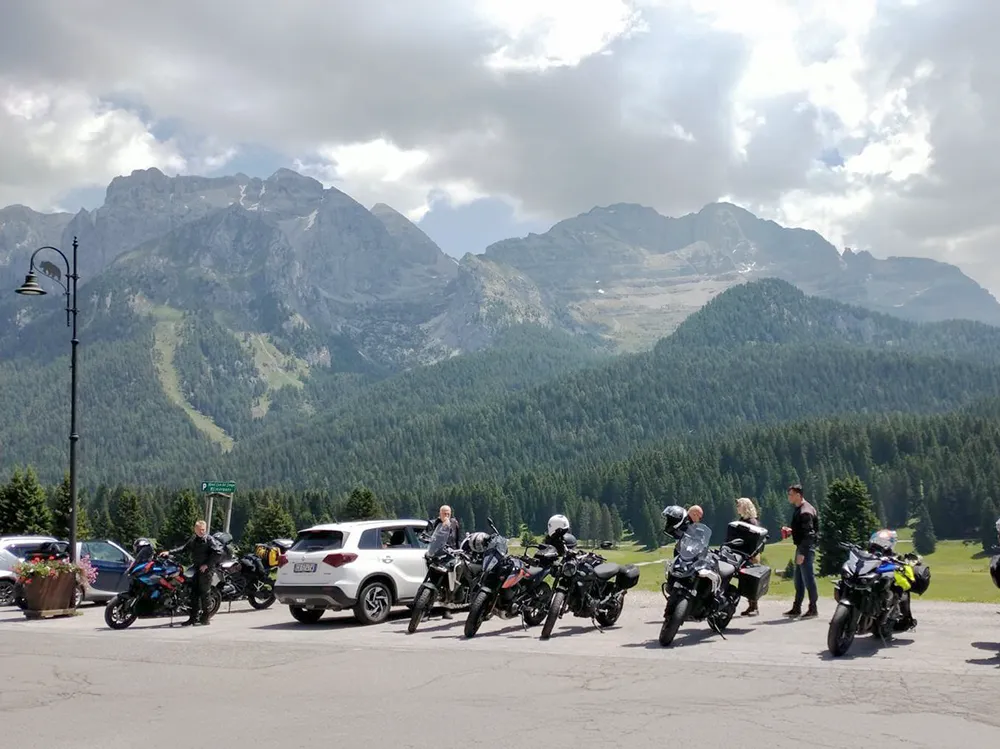
Choosing the Right Motorcycle
Which bike you ride can make a big difference on Stelvio. Ideal machines combine nimble handling for the corners with enough comfort for the climb. Adventure-touring or sport-touring bikes often work best. For example, BMW’s R 1250 GS is a classic Stelvio choice: it has advanced suspension for comfort and is versatile on twisty roads. If you prefer something with a sportier posture, the BMW S 1000 XR excels on twisty mountain roads thanks to its dynamic handling.
Both models have ample torque for climbing and can carry luggage.Touring bikes with large fairings are another option. The BMW R 1250 RT has plenty of luggage space for a long ride, but is heavier to flick around. The BMW K 1600 GT, with its inline-six engine, has loads of power and comfort for a two-up ride. Ducati’s lineup is also worth considering: the Multistrada V4 has great brakes (perfect for steep descents) and combines sportiness with touring practicality. For a lighter bike, Ducati’s Monster or Scrambler series give an unfaired, agile feel, but you sacrifice some wind protection.
If you want an off-road edge, the Honda Africa Twin 1100 comes with built-in panniers and is designed for mixed on/off-road adventure. It’s comfortable and has the upright stance useful for narrow lanes. However, Stelvio’s pavement is good, so pure dirt bikes are not necessary. We generally recommend adventure-touring bikes as the best compromise: they handle gravel shoulders if needed, and they have longer travel suspension. Examples from our fleet include the BMW GS and Africa Twin.
Renting with Italy Moto Tours
At Italy Moto Tours, we’ve selected a fleet of premium motorcycles for exactly these kinds of rides. Each bike is fully serviced and prepped for Alpine passes. For example, the BMW R 1250 GS in our fleet has advanced suspension and is perfect for riders seeking comfort on gravel or asphalt. Our Honda Africa Twin 1100 rentals come with large panniers right off the bat, perfect for packing gear on a Stelvio tour. Sport-touring riders can opt for a BMW S 1000 XR, which “allows you to fully experience its dynamic performance… especially on twisties”.
When you rent with us, every motorcycle is ready for the Italian roads: tires are chosen for grip, and we even provide GPS mounts and Bluetooth comms upon request. We recommend checking the seat height and comfort before you leave, since Stelvio’s ride is hours long. If possible, book a bike with luggage (panniers and top case) so you don’t have to juggle bags. All our premium tours include a proper luggage rack and mounting points for phone/GPS holders.
Rental and Tour Preparation

If you’re renting on your own for Stelvio, book early – spring and summer fill up quickly. Make sure your license and insurance are in order. Italy Moto Tours offers various insurance packages; even basic coverage in Europe often excludes mountainous roads, so double check everything is covered. Fill up before you go; the next gas station after Bormio is a long way up.
Finally, ask locals or guides on timing: Stelvio can be busy in peak season. Many riders recommend an early morning start to avoid traffic and catch sunrise views. Check your helmet visor and mirrors are clean (road salt dust can accumulate).
By choosing the right bike model and preparing your rental properly, you’ll enjoy Stelvio much more. Adventure bikes with good suspension and upright seating (like the BMW GS or Honda Africa Twin) are top choices, but any reliable, well-maintained motorcycle can make memories on the pass.
Riding Stelvio with Italy Moto Tours
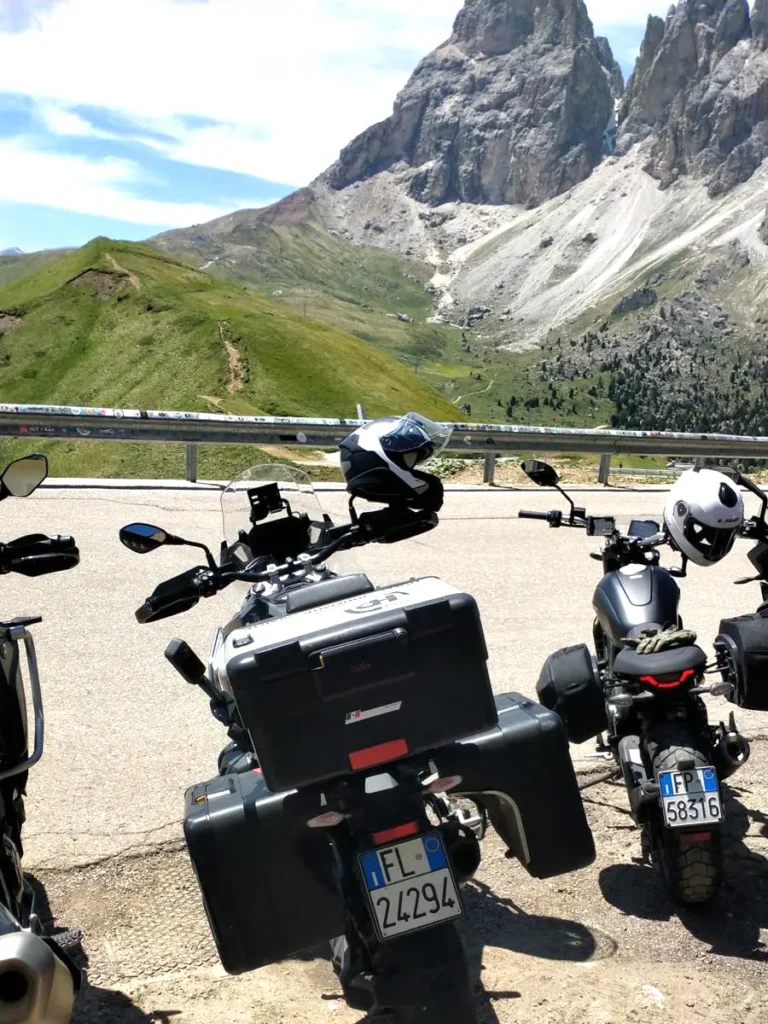

As experienced guides, we at Italy Moto Tours help international riders ride Stelvio safely and enjoyably. We know “bikes are prepared for long-distance touring” and have the gear to back that up. In our fully guided Stelvio and Dolomites tours, we provide optional equipment like heated grips, full rain suits and technical riding briefings. Our multi-lingual guides share tips on cornering and local traffic etiquette.
In short, being part of our guided group means you come fully prepared: riders bring only personal items and we supply the rest. If you prefer self-guided riding, we still recommend the above checklist before you go. And of course, if you need it, Italy Moto Tours can advise on any gear or bike questions – just ask our team.

